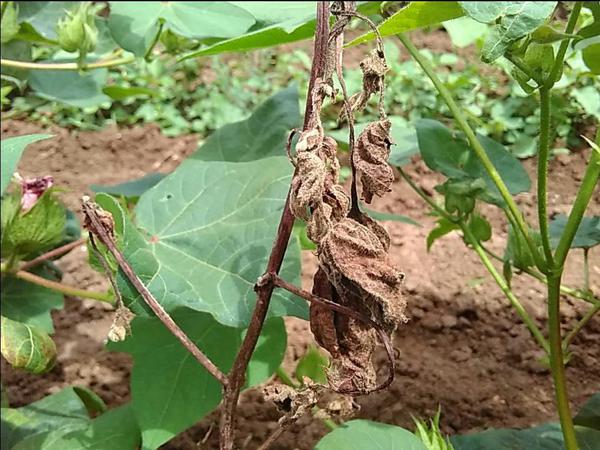Skip to content
- This disease occurs in both native and American varieties of cotton.
- Usually, it occurs after the first monsoon rains the plant enters a state of 30-40 days.
- Symptoms of root rot disease appear circular or field crops start drying up in circular patches.
- The affected plant roots are Melt When you uproot the plants it’s easily uprooted.
- Trichoderma viride should be used as soil treatment at the rate of 500 gram/acre.
- Carbendazim 12% + Mancozeb 63% WP @ 500 gram / acre or thiophanate methyl 70% WP @ 500 gram / acre or Trichoderma viride @ 250 gram / acre
Share
- The withering of cotton plants is the first symptom of this disease.
- Due to this, in severe cases all the leaves may fall or the plant may fall.
- In this disease, the root bark bursts after yellowing due to which water and nutrients do not reach the plant properly.
- The entire root system rotting and the plant can be uprooted easily.
- Initially, only a few plants are affected in the field. Then, with time, the disease spreads around the entire field, forming a circle around these plants.
- To prevent disease, seeds should be treated @ 5 grams of Trichoderma viride or 10 grams of Pseudomonas fluorescens per kg. or
- Treat seeds @ 2.5 gm Carbendazim 12% + Mancozeb 63% WP per kg.
- To protect, spread 2 acres of Trichoderma viride in 4 tons FYM and spread it in an acre field.
- For disease control, mix 500 gm of Carbendazim 12% + Mancozeb 63% WP or 500 gm Thiophanate Methyl 75% WP or 600 gm Metalaxyl 4% + Mancozeb 64% WP in 200 liters of water and drenching near the stem of the plant.
Share

